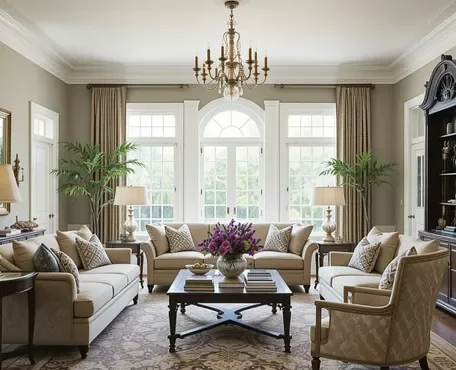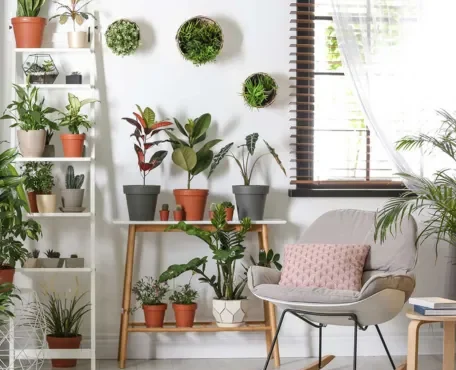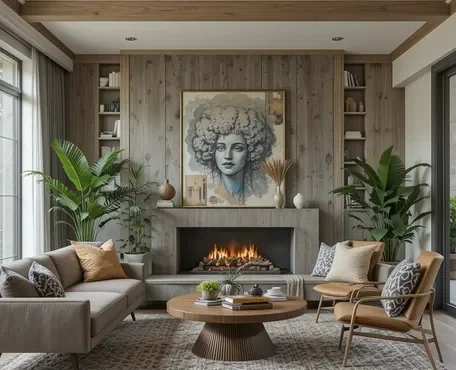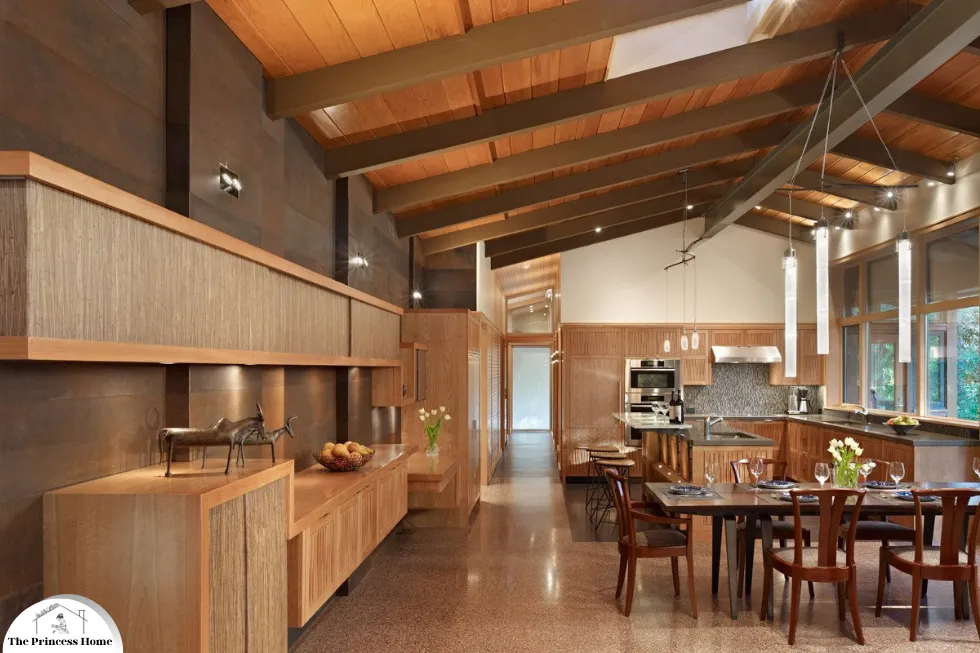
Wood Wall Decor Guide & Tips for Stylish Your Space
In the realm of interior design, few elements boast the timeless allure and natural charm of wood. Its warmth, texture, and versatility make it a favorite among designers and homeowners alike. From rustic to modern, wood wall accents add depth, character, and a touch of sophistication to any interior.
Here are several classifications of wooden wall designs used for decoration:

1.Wood Panels
Wooden paneling involves covering walls with wooden panels, creating a cozy and inviting atmosphere. Paneling can be traditional, with wood planks installed vertically or horizontally, or it can be modern, with geometric patterns or 3D textures. Paneling can be made from various types of wood, such as pine, oak, cedar, or reclaimed wood, and it adds rustic charm or contemporary elegance to interiors. wood wall decor paneling is typically made from solid wood or engineered wood, such as plywood or MDF (medium-density fiberboard). Here are some pros and cons of wood wall paneling:
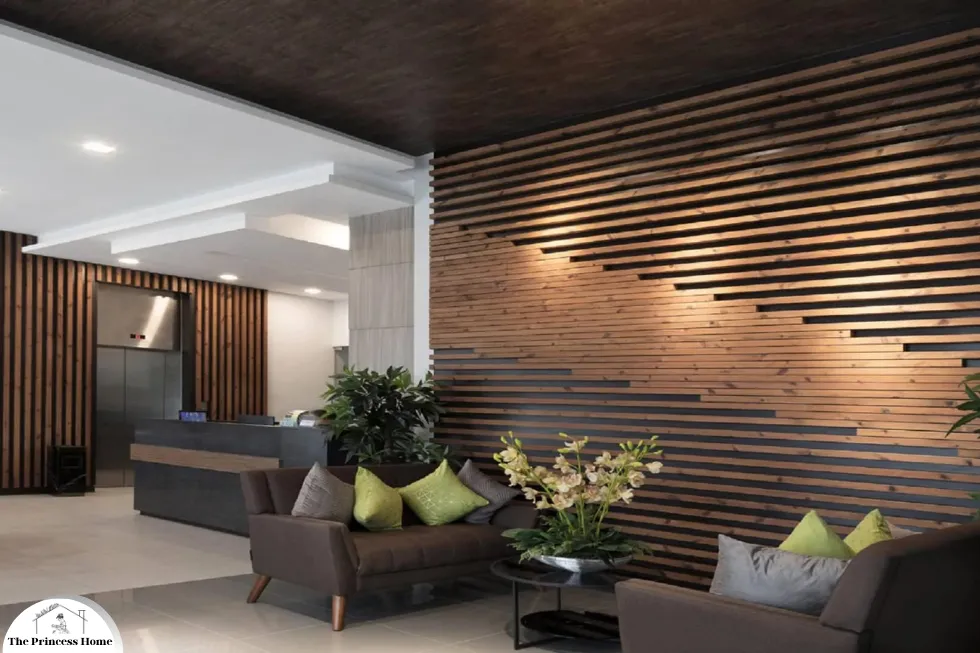
Pros
Wood paneling adds warmth, texture, and a natural element to any room. It can enhance the overall visual appeal of the space. Wood has natural insulating properties, which can help regulate room temperature and reduce energy costs. High-quality wood paneling can be quite durable and long-lasting, especially if properly maintained.
Wood paneling comes in various styles, finishes, and colors, allowing for customization to suit different interior design preferences. Wood paneling can help absorb sound, making it a popular choice for rooms where acoustic properties are important, such as home theaters or recording studios.
Cons
Depending on the type of wood and quality, wood paneling can be relatively expensive compared to other wall covering options. Wood paneling requires regular maintenance to keep it looking its best. This may include cleaning, refinishing, or repairing any damage that occurs over time. Solid wood paneling, in particular, can be prone to warping, swelling, or rotting if exposed to moisture or humidity.
Engineered wood options may be more resistant to moisture but can still be affected if not properly sealed. Installing wood paneling can be more complex than other wall covering options, especially if precise measurements and cuts are required. Some types of wood paneling may raise environmental concerns, particularly if the wood is not sustainably sourced.
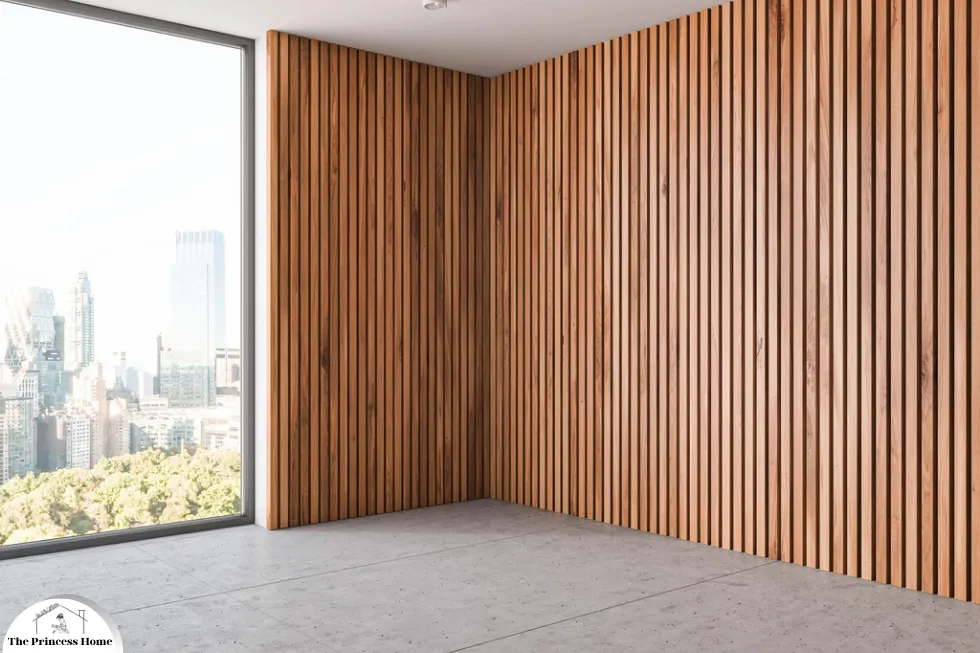
Tips to care for wood paneling
Cleaning & Avoid moisture
Dust wood paneling regularly with a soft cloth or vacuum attachment to prevent dust buildup. For more thorough cleaning, use a mild detergent diluted in water and a soft sponge or cloth. Avoid abrasive cleaners that can damage the wood finish. Keep wood paneling dry and avoid exposing it to excessive moisture or humidity, as this can cause warping, swelling, or mold growth. Wipe up spills immediately and ensure proper ventilation in the room.
Sunlight & Repair damage
Direct sunlight can cause wood paneling to fade or discolor over time. Use curtains, blinds, or UV-protective coatings on windows to minimize sun exposure. Address any scratches, dents, or other damage to the wood paneling as soon as possible to prevent further deterioration. Depending on the severity of the damage, repairs may involve sanding, filling, or refinishing the affected area.
Seal or finish:
Consider applying a sealant or finish to the wood paneling to protect it from stains, moisture, and wear. Choose a product specifically designed for wood surfaces and follow the manufacturer’s instructions for application.
By following these care tips, you can help preserve the beauty and integrity of your wood wall decor paneling for years to come.
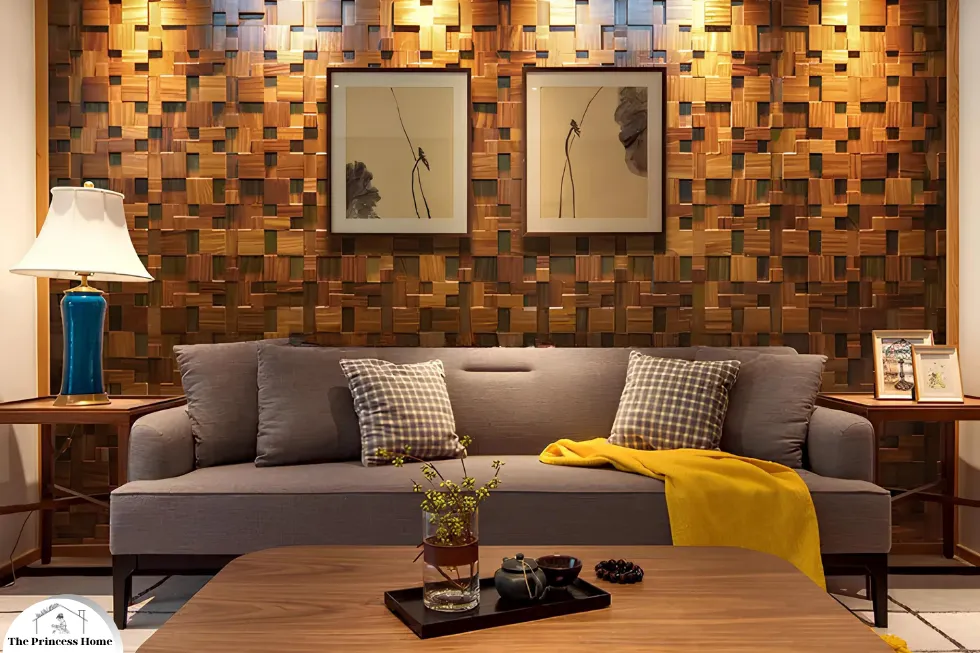
2.Wooden Mosaic Tiles
Wood mosaic tiles are small wooden pieces arranged in a mosaic pattern to create intricate designs on walls. mosaic tiles can be made from various types of wood, such as teak, oak, or walnut, and they add a touch of luxury and sophistication to interiors. Wooden mosaic tiles are often used as decorative accents in bathrooms, kitchens, or feature walls. Wooden mosaic tiles are typically made from small pieces of wood arranged in a mosaic pattern and adhered to a backing material, such as mesh or plywood. Here are some pros and cons of wooden mosaic tiles:
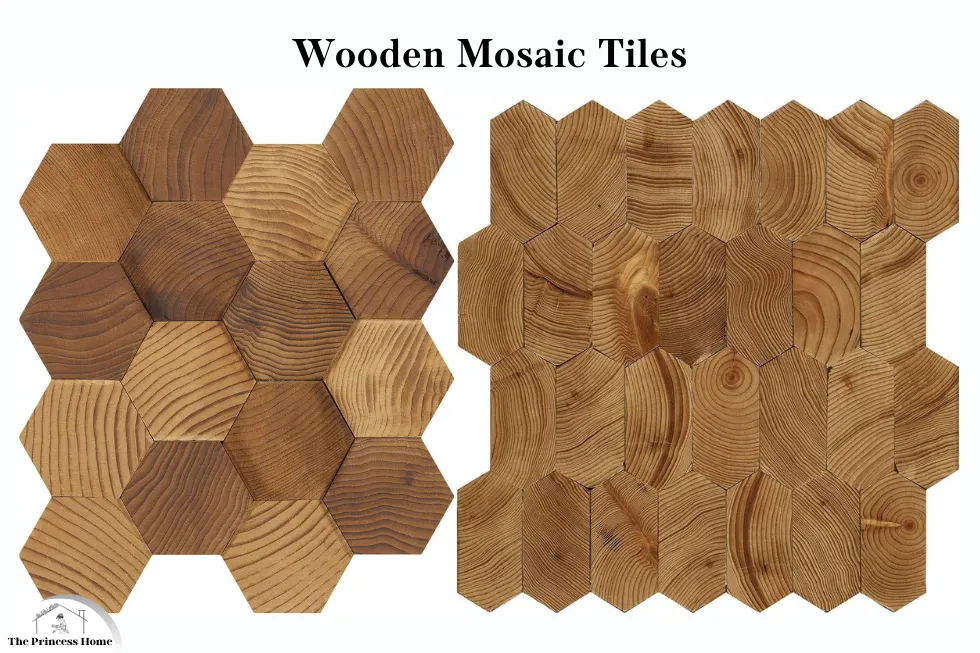
Pros
Wooden mosaic tiles add warmth, texture, and visual interest to any space. They come in a variety of colors, patterns, and wood species, allowing for customization to suit different design preferences. Wooden mosaic tiles are often made from reclaimed or sustainably sourced wood, making them an environmentally friendly choice for eco-conscious consumers. Wooden mosaic tiles can be used in various applications, including floors, walls, ceilings, and even furniture or artwork.
They can create a unique and personalized look in any room. High-quality wooden mosaic tiles can be quite durable and resistant to wear and tear, especially if properly sealed and maintained.Wooden mosaic tiles are typically lightweight and easy to install, especially when mounted on mesh backing. They can be installed using standard tile adhesive and grout.
Cons
Wood is naturally prone to damage from moisture, so wooden mosaic tiles may not be suitable for wet areas such as bathrooms or kitchens unless properly sealed and maintained. Wooden mosaic tiles require regular maintenance to keep them looking their best. This may include cleaning, sealing, and resealing as needed to protect the wood from moisture and stains. Wooden mosaic tiles can be more expensive than other types of tile or flooring materials, especially if made from high-quality or exotic wood species.
Like any wood surface, wooden mosaic tiles can be susceptible to scratches, dents, and other damage from heavy furniture, high heels, or sharp objects. Wooden mosaic tiles may not be as readily available as other types of tile or flooring materials, and options may be limited depending on the desired color, pattern, or wood species.

To care for wooden mosaic
Regular cleaning & finish
Sweep or vacuum wooden mosaic tiles regularly to remove dirt, dust, and debris. Use a damp mop or cloth to clean the tiles with a mild detergent diluted in water. Avoid using abrasive cleaners or harsh chemicals that can damage the wood finish. Apply a sealant or finish to the wooden mosaic tiles to protect them from moisture, stains, and wear. Choose a product specifically designed for wood surfaces and follow the manufacturer’s instructions for application.
Wipe up spills & Avoid moisture
Promptly clean up any spills or messes on the wooden mosaic tiles to prevent stains and damage to the wood. Use a clean, damp cloth to wipe away spills, and dry the tiles thoroughly afterward. Limit exposure to moisture or humidity, especially in areas prone to spills or water splashes. Use rugs or mats in entryways or high-traffic areas to protect the wooden mosaic tiles from moisture and wear.
Repair damage as needed:
Address any scratches, dents, or other damage to the wooden mosaic tiles as soon as possible to prevent further deterioration. Depending on the severity of the damage, repairs may involve sanding, filling, or refinishing the affected area.
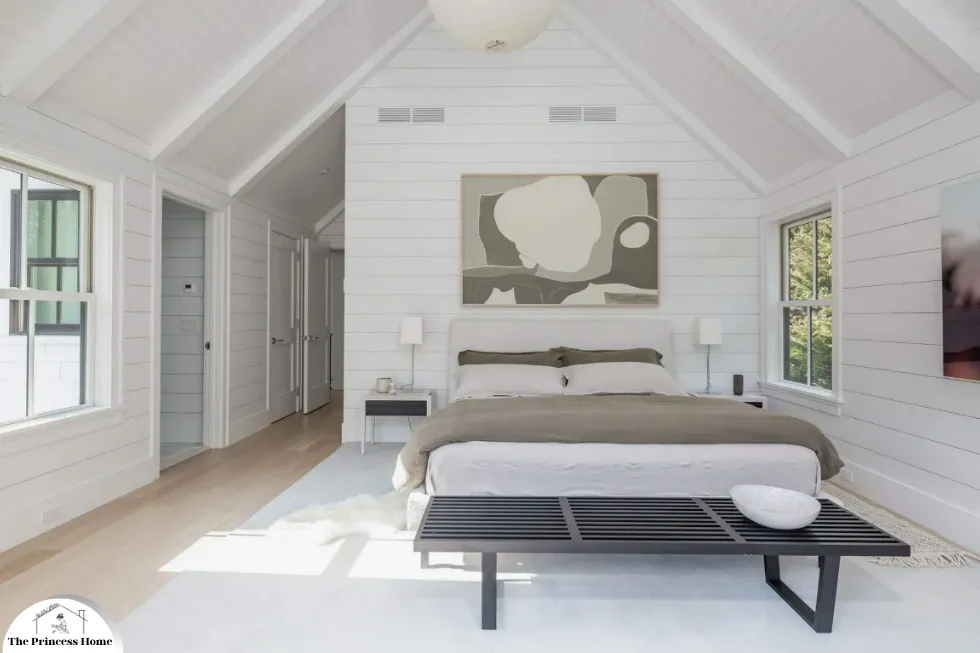
3.Wood Wall Shiplap
Shiplap is a type of wooden wall paneling characterized by overlapping horizontal boards. Originating from traditional boatbuilding techniques, shiplap has become popular in interior design for its rustic and coastal aesthetic. Shiplap can be installed vertically or horizontally, and it adds texture and character to walls, particularly in farmhouse-style or coastal-themed interiors. Shiplap is a type of wooden wall paneling characterized by overlapping horizontal boards. pros and cons of wood wall Shiplap :
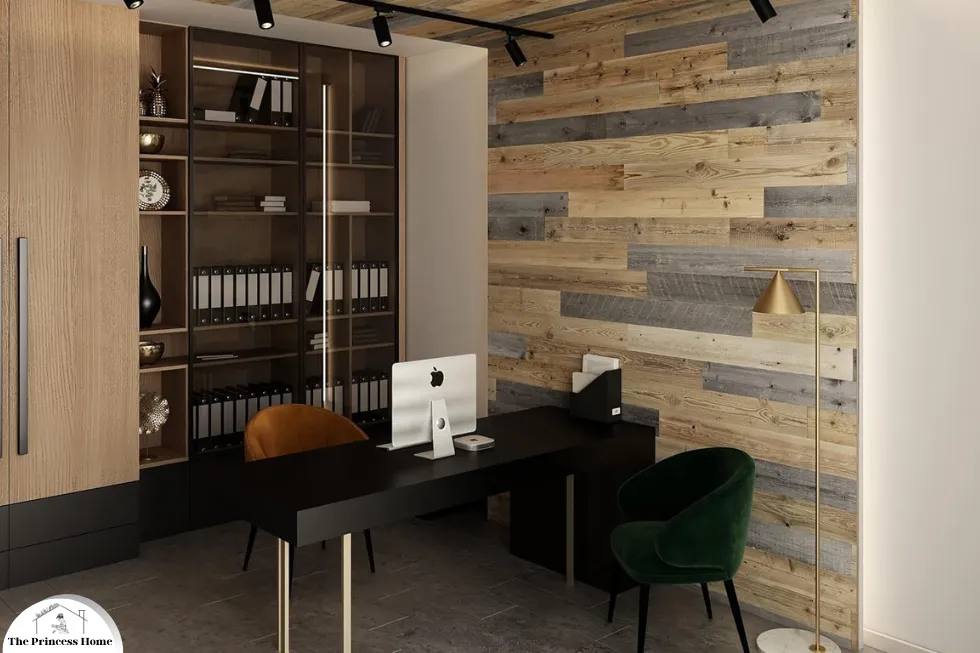
Pros
Shiplap adds a timeless and rustic charm to any space, making it a popular choice for farmhouse, coastal, or cottage-style interiors. Shiplap can be installed on walls, ceilings, or even used as exterior siding. It’s suitable for various rooms in the home, from living areas to bedrooms and bathrooms. Shiplap is relatively easy to install, especially compared to other types of paneling or wall treatments.
It can be nailed or glued directly onto wall studs or existing drywall. Shiplap can help conceal minor imperfections in walls or uneven surfaces, providing a clean and uniform appearance. The horizontal lines and overlapping boards of shiplap create visual interest and texture, enhancing the overall design of the space.
Cons
Like any wood surface, shiplap requires regular maintenance to preserve its appearance and durability. This may include cleaning, refinishing, or repairing any damage that occurs over time. Solid wood shiplap can be prone to warping, swelling, or rotting if exposed to moisture or humidity. Proper sealing and ventilation are essential to prevent moisture-related issues. Depending on the type of wood and quality, shiplap can be relatively expensive compared to other wall covering options. However, it’s possible to achieve a similar look with more budget-friendly materials, such as engineered wood or vinyl shiplap.
While shiplap adds visual warmth to a space, it doesn’t provide significant insulation value compared to other wall materials. Additional insulation may be needed behind the shiplap to improve energy efficiency. Cleaning and maintenance of shiplap involve regular dusting with a soft cloth or vacuum attachment to remove dirt and debris. For more thorough cleaning, use a mild detergent diluted in water and a soft sponge or cloth.

To care for Wood Wall Shiplap
Dust Regularly &Clean
Use a soft cloth or a microfiber duster to remove dust and dirt. For harder-to-reach spots, a vacuum cleaner with a brush attachment can help. If a deeper clean is needed, mix a small amount of mild dish soap with warm water. Dampen a cloth, wipe the surface, and then dry with a clean towel to avoid water damage.
Chemicals & Moisturize
Steer clear of abrasive cleaners or those containing bleach, as they can damage the finish or stain the wood. To keep the wood looking fresh and prevent cracking, use a wood conditioner or oil (like linseed oil) once every few months. This is especially important if the shiplap is in a dry area.
Protect & Extra Protection:
Place protective pads under furniture or decor to prevent scratching. Consider using felt pads or other protective materials for any items leaning against the shiplap. If the shiplap is in a high-moisture area (like a bathroom), apply a water-resistant wood sealer to protect it from damage.
Check for Damage & Finish
Periodically inspect the shiplap for signs of wear, such as loose boards, cracking, or discoloration. Address issues promptly to prevent further damage. If the wood is stained or painted, touch up the finish as needed to maintain its appearance and protect it from wear.
By following these simple steps, your wood wall shiplap can retain its natural beauty and last for many years.
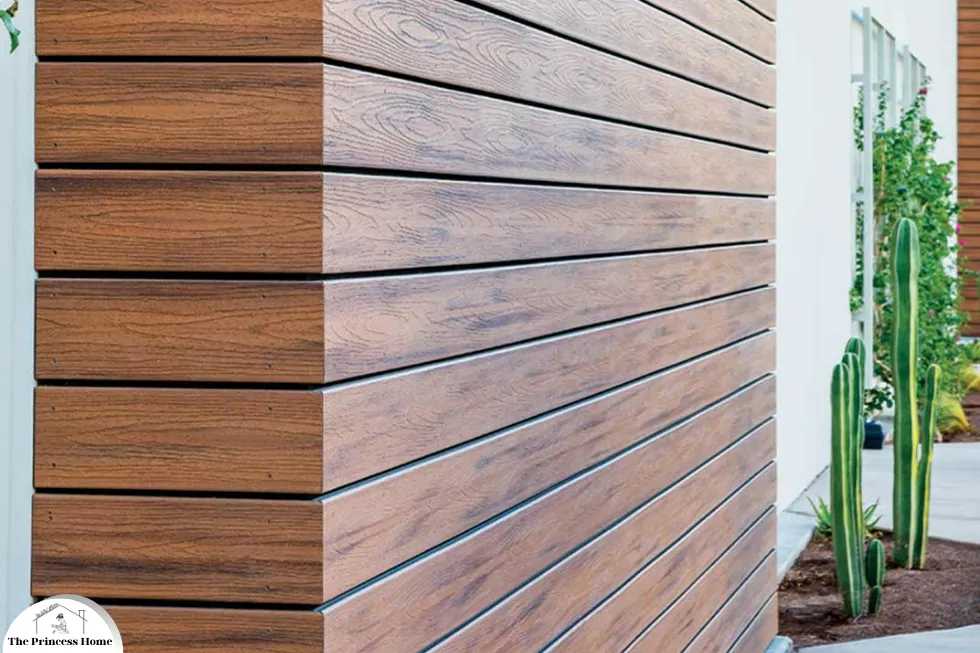
4.Wood Siding
Wood siding can be made from a variety of wood species, including cedar, pine, redwood, and spruce. It’s available in different profiles, such as clapboard (also known as lap siding), shingles, shakes, and vertical boards. The type of wood and profile chosen will affect the appearance, durability, and maintenance requirements of the siding. Here are some pros and cons of wood wall siding :
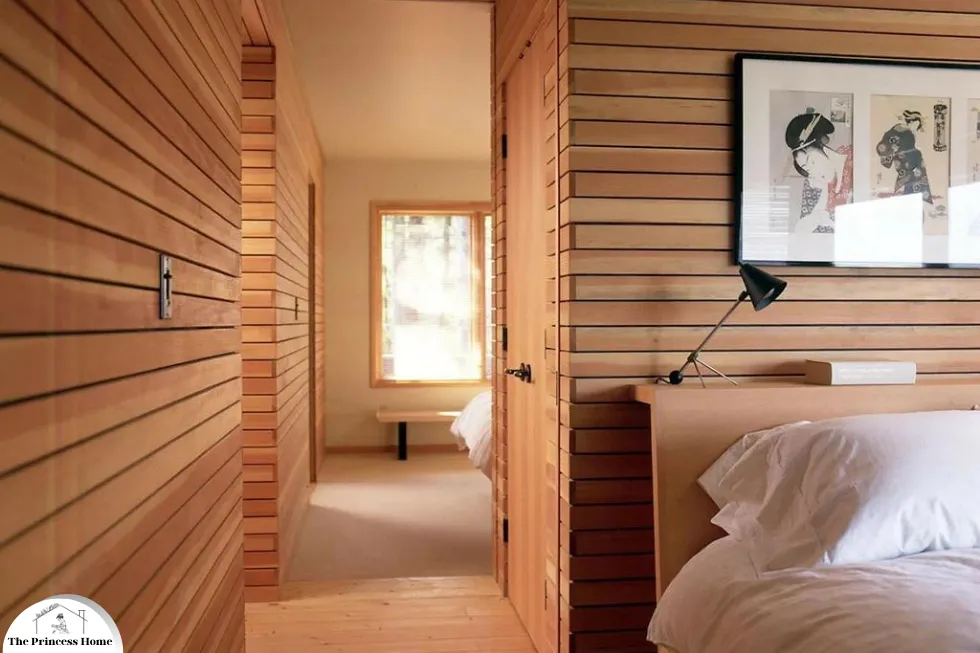
Pros
Wood siding offers a timeless and natural look that enhances the curb appeal of a home. It can be stained or painted in a wide range of colors to suit different architectural styles and design preferences. Wood is a renewable resource, making it an environmentally friendly choice for siding. Additionally, wood siding can be recycled or repurposed at the end of its lifespan. Wood siding provides natural insulation properties, helping to regulate temperature and reduce energy costs.
It can contribute to a more comfortable and energy-efficient home. Wood siding is highly customizable, allowing homeowners to achieve their desired look through different wood species, profiles, and finishes. High-quality wood siding, properly installed and maintained, can last for several decades. Some wood species, such as cedar and redwood, are naturally resistant to rot, decay, and insect damage.
Cons
Wood siding requires regular maintenance to protect it from moisture, rot, insects, and UV damage. This may include periodic cleaning, sealing, painting, or staining, as well as inspecting for signs of damage and making repairs as needed. Wood siding can be more expensive than other types of siding materials, such as vinyl or fiber cement. However, the initial cost may be offset by the long-term durability and aesthetic appeal of wood siding.
Wood siding is vulnerable to moisture-related issues, such as rot, mold, and mildew, if not properly sealed and maintained. Adequate ventilation and drainage are essential to prevent moisture buildup behind the siding. Certain wood species, particularly untreated or improperly maintained wood, are susceptible to insect infestation, such as termites or carpenter ants.
Regular inspections and treatment may be necessary to prevent pest damage. Wood siding is combustible and may pose a fire risk, especially in areas prone to wildfires. Consideration should be given to fire-resistant treatments or alternative siding materials in high-risk areas.Caring for wood siding involves regular maintenance to protect it from the elements and preserve its appearance and integrity.
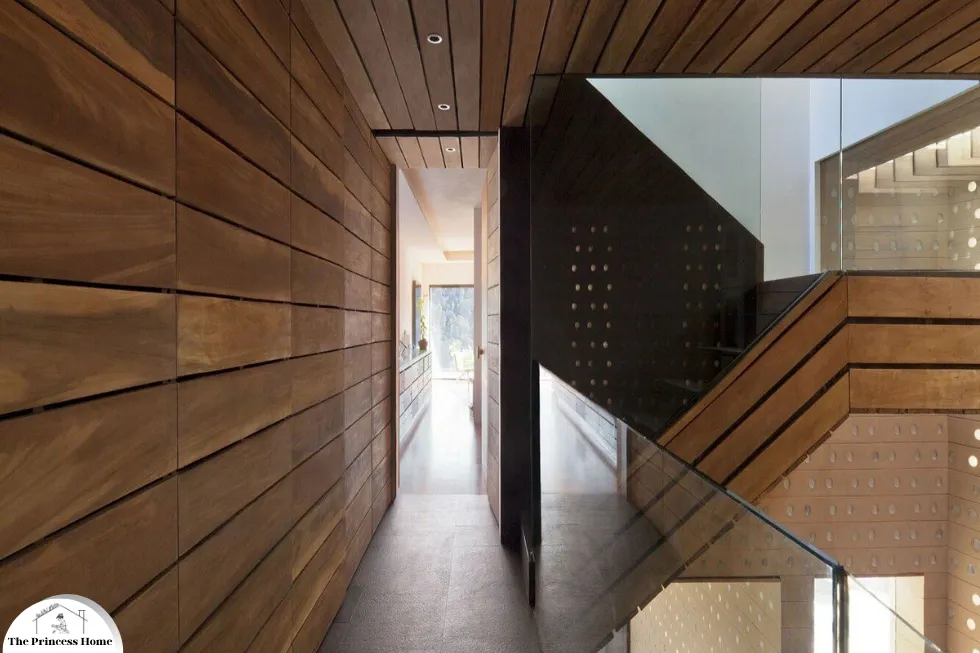
Tips for caring for wood siding
Clean regularly
Wash wood siding with a mild detergent and water solution to remove dirt, dust, and mildew. Use a soft brush or cloth to scrub the surface gently, and rinse thoroughly with clean water.
Seal or finish & damage
Apply a protective sealant, stain, or paint to wood siding to enhance its durability and resistance to moisture, UV damage, and pests. Choose a product specifically designed for exterior wood surfaces and follow the manufacturer’s instructions for application.Regularly inspect wood siding for signs of damage, such as cracks, splits, rot, or insect infestation.
Address any issues promptly to prevent further deterioration and maintain the structural integrity of the siding. Keep vegetation trimmed away from wood siding to prevent moisture buildup, pest infestation, and damage from overgrowth. Maintain a clearance of at least 6 inches between plants and siding.
Repair as needed
Make repairs to wood siding as soon as damage is detected. Replace any damaged or deteriorated boards, fill cracks or holes with wood filler, and sand and refinish the surface as necessary to restore its appearance and protect it from further damage.
By following these care tips, you can help protect and prolong the life of your wood siding, keeping your home looking beautiful for years to come.
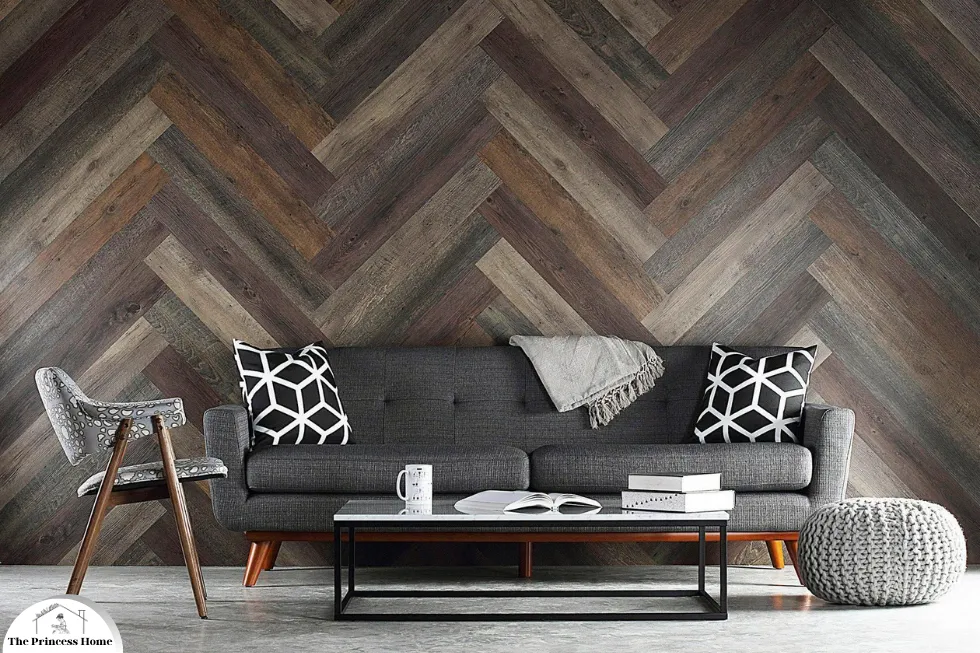
5.Wooden Planks
Wooden planks are narrow strips of wood that can be installed on walls to create a modern and minimalist look. Wood plank walls can be installed vertically, horizontally, or in a herringbone pattern, depending on the desired aesthetic. Wooden planks can be left natural, stained, or painted in a variety of colors to match the decor style of the room. Wooden planks can refer to a variety of solid wood boards used for various purposes, including flooring, furniture, shelving, and decorative accents. The type of wood used for planks can vary, each with its own characteristics. Here are some pros and cons of wood wall planks :

Pros
Wooden planks offer a warm and natural aesthetic that adds character and charm to any space. Each wood species has its own unique grain pattern, color variations, and texture, allowing for endless design possibilities. High-quality wooden planks, properly installed and maintained, can last for decades. Hardwood planks, in particular, are known for their strength, stability, and resistance to wear and tear. Wooden planks can be used for a wide range of applications, including flooring, wall paneling, furniture, and DIY projects.
They can be cut, stained, painted, and finished to achieve the desired look and functionality. Wood is a renewable resource, making wooden planks an environmentally friendly choice for interior design and construction. Look for sustainably sourced or reclaimed wood options to minimize environmental impact. Wood has natural insulating properties, helping to regulate temperature and reduce energy costs. Wooden flooring, in particular, can provide additional insulation against noise and impact.
Cons
Wooden planks require regular maintenance to preserve their appearance and integrity. This may include cleaning, refinishing, and repairing any damage that occurs over time, such as scratches, dents, or water stains. Wood is vulnerable to damage from moisture, humidity, and water exposure. Proper sealing and maintenance are essential to protect wooden planks from warping, swelling, rot, and mold growth.
Depending on the type of wood and quality, wooden planks can be relatively expensive compared to other flooring or building materials. However, the long-term durability and aesthetic appeal of wood may justify the investment for many homeowners. Certain wood species are susceptible to insect infestation, such as termites or wood-boring beetles.
Proper treatment and preventive measures may be necessary to protect wooden planks from pest damage. Exposure to sunlight can cause wooden planks to fade or change color over time. Use curtains, blinds, or UV-protective coatings on windows to minimize sun exposure and preserve the natural beauty of the wood. Caring for wooden planks involves regular maintenance to protect them from damage and preserve their appearance.

Tips for caring for wooden planks
cleaning & Protect
Sweep or vacuum wooden planks regularly to remove dirt, dust, and debris. Use a damp mop or cloth to clean the planks with a mild detergent diluted in water. Avoid using excessive water, as it can cause damage to the wood. Wipe up spills immediately to prevent water damage and stains. Use rugs or mats in high-traffic areas, entryways, and near sinks to protect wooden flooring from moisture and wear.
finish & Repair damage
Apply a protective sealant, stain, or finish to wooden planks to enhance their durability and resistance to moisture, stains, and scratches. Choose a product specifically designed for the type of wood and intended use, and follow the manufacturer’s instructions for application.Address any scratches, dents, or other damage to wooden planks as soon as possible to prevent further deterioration. Depending on the severity of the damage, repairs may involve sanding, filling, or refinishing the affected area.
Control humidity & sunlight
Maintain a stable indoor humidity level to prevent wood planks from expanding or contracting excessively. Use a dehumidifier in humid climates or during wet seasons, and a humidifier in dry climates or during winter months. Minimize sun exposure to wooden planks by using curtains, blinds, or UV-protective coatings on windows. Rotate rugs and furniture periodically to prevent uneven fading and discoloration.
By following these care tips, you can help protect and maintain the beauty and integrity of your wooden planks for years to come.

6.Wood veneer panels
are thin slices of wood that are typically adhered to a substrate to create a surface with the appearance of solid wood. They are often used in furniture making, cabinetry, interior decoration, and architectural applications. Veneer panels offer the aesthetic appeal of real wood while being more affordable and versatile than solid wood. They come in a variety of wood species, finishes, and sizes, making them suitable for a wide range of design styles and projects. Here are some pros and cons of wood veneer:

Pros
Wood veneer panels offer the natural beauty and warmth of real wood, with unique grain patterns, color variations, and textures that add visual interest to any space. Compared to solid wood panels, wood veneer panels are generally more affordable while still providing the aesthetic appeal of real wood. They offer a budget-friendly option for achieving the look of solid wood without the higher cost.
Wood veneer panels can be used for a wide range of applications, including furniture, cabinetry, wall paneling, doors, and architectural millwork. They can be cut, shaped, and finished to suit various design preferences and requirements. Veneered panels are less prone to warping, twisting, or cracking compared to solid wood panels, thanks to the stability provided by the core substrate.
This makes them suitable for use in environments with fluctuating humidity levels. Wood veneer panels make efficient use of wood resources by maximizing the yield from each log. They can be sourced from sustainably managed forests or from reclaimed wood sources, making them an environmentally friendly choice.
Cons
While wood veneer panels offer the beauty of real wood, they may not be as durable or long-lasting as solid wood panels. The thin veneer layer can be susceptible to scratching, chipping, or peeling over time, especially in high-traffic areas or with rough handling. Unlike solid wood, wood veneer panels may be more difficult to repair if damaged. Scratches or dents may be difficult to sand out without damaging the thin veneer layer, and repairs may be visible depending on the extent of the damage.
Wood veneer panels are sensitive to moisture and humidity, which can cause the veneer to warp, swell, or delaminate from the core substrate. Proper sealing and maintenance are essential to protect veneered surfaces from moisture-related damage. Direct sunlight can cause wood veneer panels to fade or discolor over time. Use window coverings or UV-protective coatings to minimize sun exposure and preserve the natural beauty of the wood.
Wood veneer panels should be handled with care to avoid damage to the delicate veneer layer. Avoid dragging or dropping heavy objects on veneered surfaces, and use protective pads or coasters to prevent scratches and dents. Caring for wood veneer panels involves regular maintenance to protect them from damage and preserve their appearance.
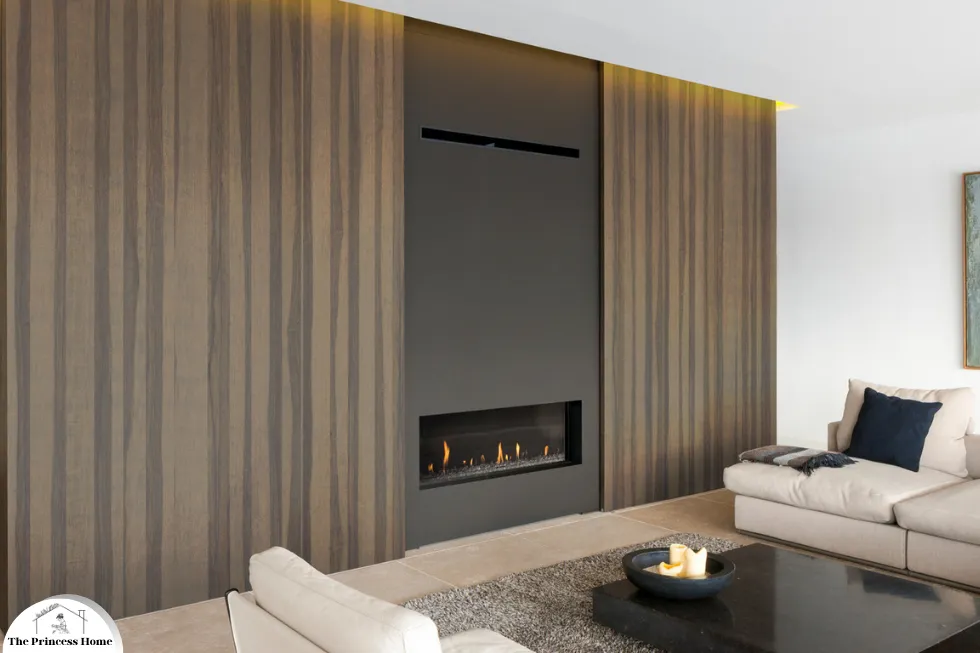
Tips for caring for wood veneer panels
Cleaning& Avoid moisture
Dust wood veneer panels regularly with a soft cloth or vacuum attachment to remove dirt, dust, and debris. Use a damp cloth or sponge to clean the panels with a mild detergent diluted in water, and dry them immediately afterward. Keep wood veneer panels dry and avoid exposing them to excessive moisture or humidity, as this can cause damage to the veneer layer or the core substrate. Wipe up spills immediately and ensure proper ventilation in the room.
Sunlight & Use coasters
Minimize sun exposure to wood veneer panels by using window coverings or UV-protective coatings on windows. Rotate furniture and accessories periodically to prevent uneven fading and discoloration. Place coasters or protective pads under items placed on wood veneer surfaces to prevent scratches, dents, and water rings. Avoid dragging or sliding heavy objects across veneered panels.
Damage & cleaners
Address any scratches, chips, or other damage to wood veneer panels as soon as possible to prevent further deterioration. Depending on the extent of the damage, repairs may involve sanding, filling, or refinishing the affected area. Avoid using abrasive cleaners, harsh chemicals, or abrasive cleaning tools on wood veneer panels, as they can damage the delicate veneer layer. Stick to mild detergents and gentle cleaning methods to preserve the integrity of the wood.
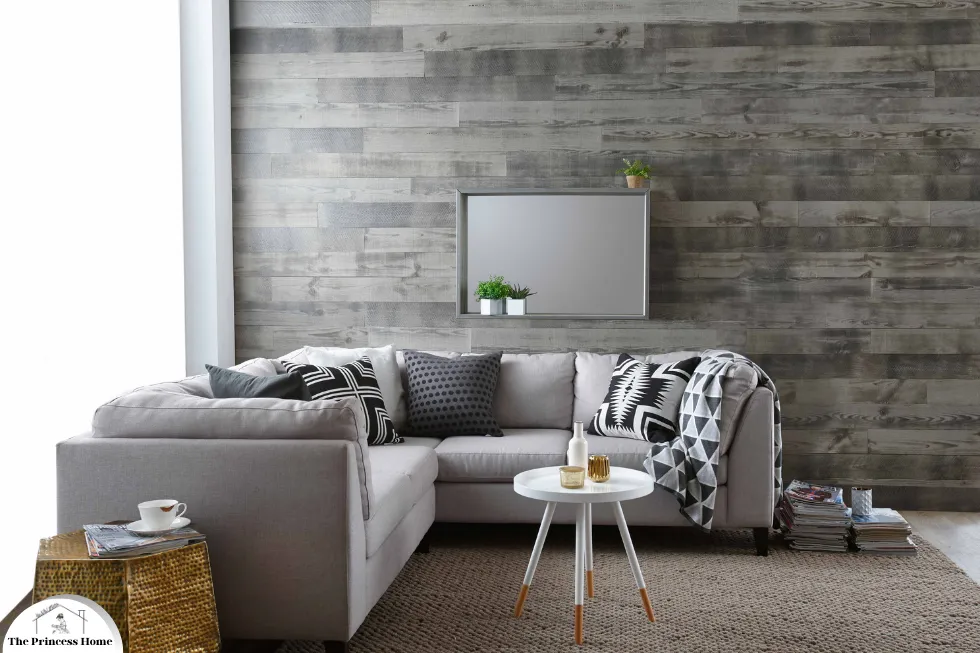
7.Wood barnwood panels
especially those crafted from barnwood, can infuse a space with rustic charm and warmth. These panels are often made from reclaimed wood sourced from old barns or other structures, giving them a weathered appearance that tells a story of their past. Whether used as wall coverings, ceiling treatments, or accents, barnwood panels add texture and character to interiors. They’re versatile, offering a timeless aesthetic that complements a range of design styles from farmhouse to industrial to modern rustic.Here are some pros and cons of wood Barnwood:
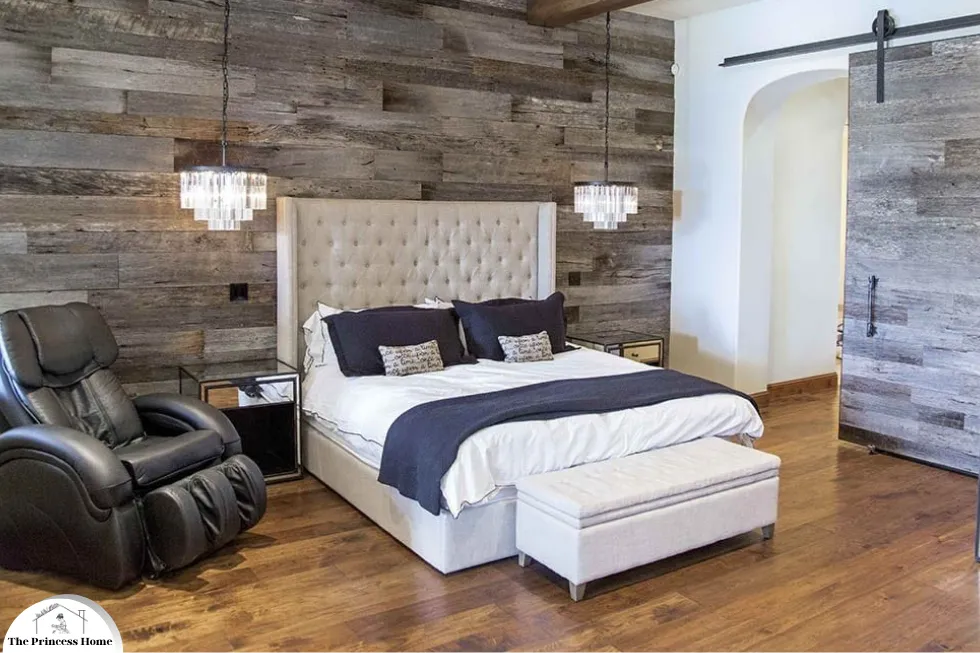
Pros
Barnwood panels offer a unique and rustic aesthetic that adds character and warmth to any space. The weathered and distressed appearance of reclaimed wood lends a sense of history and authenticity to interior design. Barnwood panels are an environmentally friendly choice, as they are made from reclaimed wood that would otherwise end up in landfills or be burned. Using reclaimed wood helps reduce the demand for new lumber and promotes sustainable practices.
Reclaimed wood is often denser and more durable than new wood, thanks to decades of weathering and aging. Barnwood panels can withstand wear and tear and maintain their appearance over time with proper care. Barnwood panels can be used for various interior applications, including wall paneling, flooring, ceilings, furniture, and decor. They can be installed horizontally or vertically to achieve different design effects. The rustic charm of barnwood panels transcends trends and styles, making them a timeless choice for interior design. They add warmth and character to both modern and traditional spaces.
Cons
Barnwood panels are made from reclaimed wood, which may be limited in quantity and availability. Finding enough reclaimed wood of consistent quality and appearance for large projects can be a challenge. Reclaimed wood often comes with natural irregularities, including knots, cracks, nail holes, and variations in color and texture. While these imperfections add to the character of barnwood panels, they may require extra care and attention during installation.
Barnwood panels can be more expensive than new wood or other wall covering materials, due to the labor-intensive process of salvaging, processing, and preparing reclaimed wood for use. However, the unique aesthetic and sustainability benefits may justify the higher cost for many homeowners. Reclaimed wood requires regular maintenance to preserve its appearance and integrity.
This may include cleaning, sealing, refinishing, and repairing any damage that occurs over time, such as scratches, dents, or water stains. Reclaimed wood may harbor insects or pests that were present in the original structure. Proper treatment and inspection may be necessary to prevent pest infestation in barnwood panels. Caring for barnwood panels involves regular maintenance to protect them from damage and preserve their appearance.

Tips for caring for barnwood panels
Cleaning & Avoid moisture:
Dust barnwood panels regularly with a soft cloth or vacuum attachment to remove dirt, dust, and debris. Use a damp cloth or sponge to clean the panels with a mild detergent diluted in water, and dry them immediately afterward. Keep barnwood panels dry and avoid exposing them to excessive moisture or humidity, as this can cause damage to the wood. Wipe up spills immediately and ensure proper ventilation in the room.
Sunlight& Use coasters
Minimize sun exposure to barnwood panels by using window coverings or UV-protective coatings on windows. Rotate furniture and accessories periodically to prevent uneven fading and discoloration. Place coasters or protective pads under items placed on barnwood surfaces to prevent scratches, dents, and water rings. Avoid dragging or sliding heavy objects across barnwood panels.
Repair damage & harsh cleaners
Address any scratches, chips, or other damage to barnwood panels as soon as possible to prevent further deterioration. Depending on the extent of the damage, repairs may involve sanding, filling, or refinishing the affected area. Avoid using abrasive cleaners, harsh chemicals, or abrasive cleaning tools on barnwood panels, as they can damage the wood. Stick to mild detergents and gentle cleaning methods to preserve the integrity of the wood.
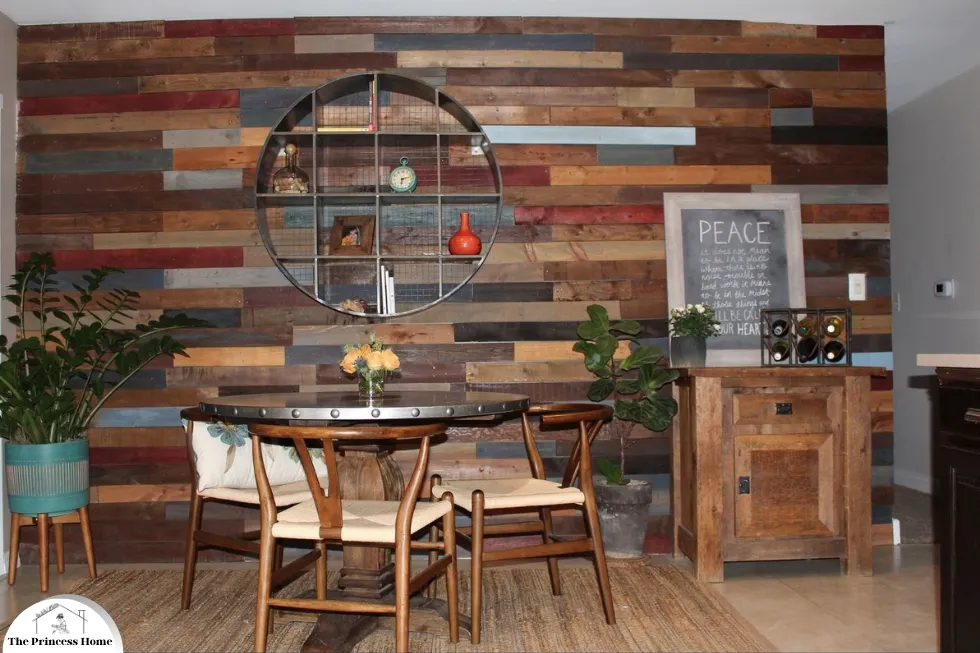
8.Reclaimed wood panels
are a fantastic way to incorporate the beauty and sustainability of reclaimed wood into interior design projects. These panels are typically made from salvaged wood sourced from old buildings, barns, or other structures. The wood is carefully processed and crafted into panels that can be used for a variety of purposes, including wall coverings, ceilings, furniture, and more.
From an environmental perspective, using reclaimed wood panels is a sustainable choice. By repurposing wood that would otherwise end up in landfills, these panels help reduce the demand for new timber and minimize the environmental impact of deforestation. Here are some pros and cons of Reclaimed wood :

Pros
Reclaimed wood panels offer a unique and rustic aesthetic that adds character and warmth to any space. The weathered and distressed appearance of reclaimed wood lends a sense of history and authenticity to interior design. Reclaimed wood panels are an environmentally friendly choice, as they are made from salvaged wood that would otherwise end up in landfills or be burned. Using reclaimed wood helps reduce the demand for new lumber and promotes sustainable practices. This wood is often denser and more durable than new wood, thanks to decades of weathering and aging.
Reclaimed wood panels can withstand wear and tear and maintain their appearance over time with proper care. Reclaimed wood panels can be used for various interior applications, including wall paneling, flooring, ceilings, furniture, and decor. They can be installed horizontally or vertically to achieve different design effects. The rustic charm of reclaimed wood panels transcends trends and styles, making them a timeless choice for interior design. They add warmth and character to both modern and traditional spaces.
Cons
Reclaimed wood panels are made from salvaged wood, which may be limited in quantity and availability. Finding enough reclaimed wood of consistent quality and appearance for large projects can be a challenge. Reclaimed wood often comes with natural irregularities, including knots, cracks, nail holes, and variations in color and texture. While these imperfections add to the character of reclaimed wood panels, they may require extra care and attention during installation.
Reclaimed wood panels can be more expensive than new wood or other wall covering materials, due to the labor-intensive process of salvaging, processing, and preparing reclaimed wood for use. However, the unique aesthetic and sustainability benefits may justify the higher cost for many homeowners. Reclaimed wood requires regular maintenance to preserve its appearance and integrity.
This may include cleaning, sealing, refinishing, and repairing any damage that occurs over time, such as scratches, dents, or water stains.Reclaimed wood may harbor insects or pests that were present in the original structure. Proper treatment and inspection may be necessary to prevent pest infestation in reclaimed wood panels.
Caring for reclaimed wood panels involves regular maintenance to protect them from damage and preserve their appearance.

Tips for caring for reclaimed wood panels
cleaning & Avoid moisture:
Dust reclaimed wood panels regularly with a soft cloth or vacuum attachment to remove dirt, dust, and debris. Use a damp cloth or sponge to clean the panels with a mild detergent diluted in water, and dry them immediately afterward. Keep reclaimed wood panels dry and avoid exposing them to excessive moisture or humidity, as this can cause damage to the wood. Wipe up spills immediately and ensure proper ventilation in the room.
Sunlight & Use coasters
Minimize sun exposure to reclaimed wood panels by using window coverings or UV-protective coatings on windows. Rotate furniture and accessories periodically to prevent uneven fading and discoloration. Place coasters or protective pads under items placed on reclaimed wood surfaces to prevent scratches, dents, and water rings. Avoid dragging or sliding heavy objects across reclaimed wood panels.
Damage & harsh cleaners
Address any scratches, chips, or other damage to reclaimed wood panels as soon as possible to prevent further deterioration. Depending on the extent of the damage, repairs may involve sanding, filling, or refinishing the affected area. Avoid using abrasive cleaners, harsh chemicals, or abrasive cleaning tools on reclaimed wood panels, as they can damage the wood. Stick to mild detergents and gentle cleaning methods to preserve the integrity of the wood.
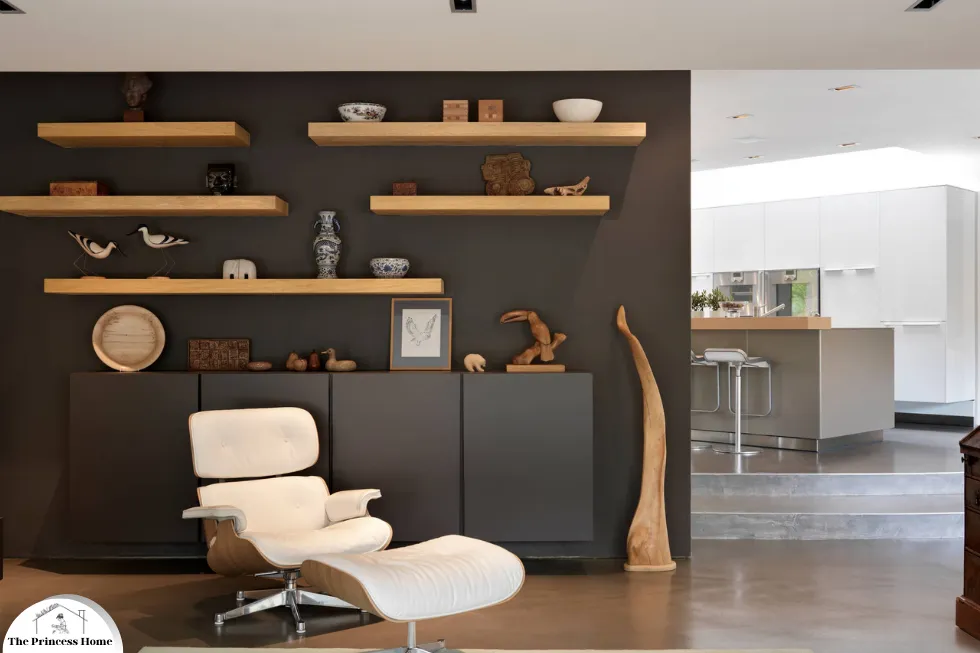
9.Wooden Wall Shelves
Wood wall shelves provide both functionality and decorative appeal, allowing for the display of books, artwork, or decorative objects. Wooden wall shelves can be simple floating shelves, rustic wood plank shelves, or elaborate carved shelves, depending on the style of the room. Wooden shelves add storage and visual interest to walls, making them versatile additions to any interior space. wall shelves are typically made from solid wood or engineered wood, such as plywood or MDF (medium-density fiberboard). Here are some pros and cons of Wooden wall shelves :

Pros
Wooden wall shelves offer a warm and natural aesthetic that complements a variety of interior styles, from traditional to contemporary. The grain patterns, knots, and natural variations in wood add character and charm to any space. Wooden wall shelves come in a wide range of sizes, shapes, and styles, making them versatile for different storage and display needs.
They can be customized with different finishes, stains, or paint colors to match or complement existing decor. High-quality wooden wall shelves can be quite durable and long-lasting, especially if made from solid wood. Properly constructed and installed shelves can support significant weight and withstand daily use without sagging or warping.
Wooden wall shelves can be customized to fit specific dimensions, configurations, or design preferences. They can be mounted individually or grouped together to create unique and functional storage solutions. Wooden wall shelves made from sustainably sourced wood or reclaimed wood are an environmentally friendly choice. Using wood from responsibly managed forests or salvaged materials helps reduce the environmental impact of manufacturing and promotes sustainability.
Cons
Wooden wall shelves are vulnerable to scratches, dents, and other forms of damage from impact, moisture, and environmental factors. Careful handling and proper installation are necessary to prevent damage and prolong the life of wooden shelves. Wooden wall shelves require regular maintenance to preserve their appearance and integrity. This may include dusting, cleaning, refinishing, and repairing any damage that occurs over time.
Depending on size, material, and craftsmanship, wood wall shelves can be relatively expensive compared to other types of shelving materials, such as metal or plastic. Handmade or custom shelves may come at a higher price due to the time and skill it takes to create them. Solid wood wall shelves can be heavy, especially larger or thicker shelves, which may require additional support and secure mounting hardware for installation.
Wooden wall shelves are sensitive to moisture and humidity, which can cause warping, swelling, or mold growth. Proper sealing and maintenance are necessary to protect wooden shelves from moisture-related damage. Caring for wooden wall shelves involves regular maintenance to protect them from damage and preserve their appearance.

Tips for caring for wooden wall shelves
Dust & Clean gently
Dust wooden wall shelves regularly with a soft, dry cloth or feather duster to remove dirt, dust, and debris. Avoid using abrasive cleaners or harsh chemicals, as they can damage the wood finish. For more thorough cleaning, use a damp cloth or sponge with mild soap and water to gently clean the surface of the wooden shelves. Dry the shelves immediately afterward to prevent moisture damage.
Avoid moisture & sunlight
Keep wooden wall shelves dry and avoid exposing them to excessive moisture or humidity, as this can cause warping, swelling, or mold growth. Wipe up spills immediately and ensure proper ventilation in the room. Minimize sun exposure to wooden wall shelves by displaying them in areas with indirect sunlight or using UV-protective coatings on windows. Rotate the shelves periodically to prevent uneven fading and discoloration.
Care & Repair damage
Handle wooden wall shelves with care to prevent scratches, dents, or other damage. Avoid placing heavy objects on the shelves and use caution when installing or adjusting them. Address any scratches, dents, or other damage to wooden wall shelves as soon as possible to prevent further deterioration. Depending on the extent of the damage, repairs may involve sanding, filling, or refinishing the affected area.
By following these care tips, you can help protect and maintain the beauty and integrity of your wooden wall shelves for years to come.
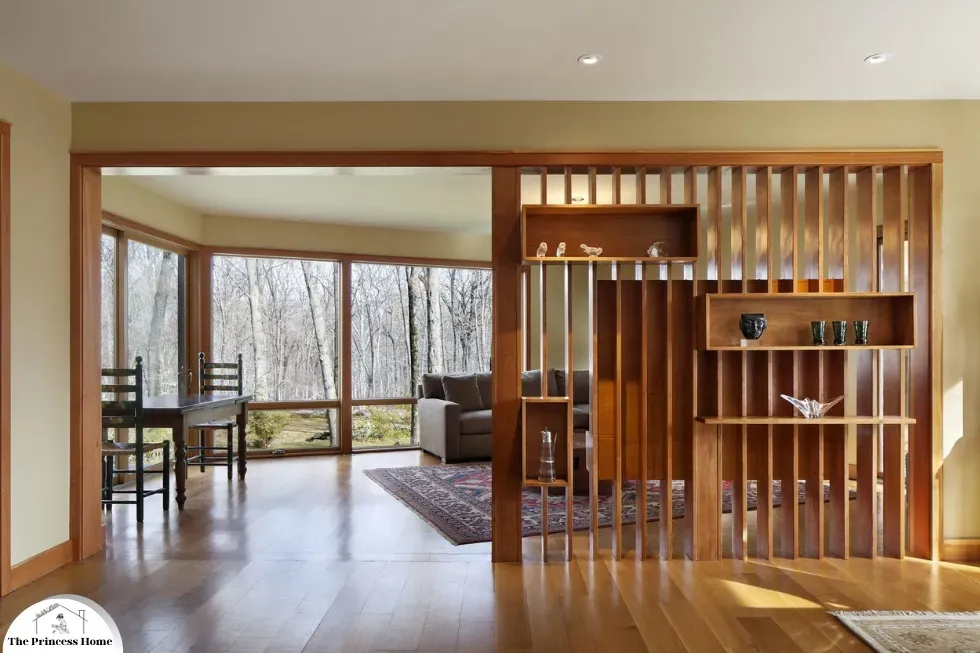
10.Wooden Wall Dividers
Wooden wall dividers are a versatile and stylish solution for enhancing the functionality and aesthetics of open-concept spaces or multi-functional rooms. These architectural elements offer several benefits, including privacy, separation, and visual interest, while allowing natural light and airflow to permeate the space. Whether you opt for sliding, folding, or stationary designs, wooden wall dividers can elevate the ambiance of your interior while creating defined areas within a larger space. Here are some pros and cons of Wooden Wall Dividers :

Pros
Wooden wall dividers add warmth, texture, and a natural aesthetic to any space, enhancing the overall ambiance. They come in various styles, finishes, and designs, allowing for customization to suit different interior styles and preferences. Wooden wall dividers provide privacy and separation in open-concept spaces or multi-functional rooms without completely closing off the area.
They serve as decorative elements, adding visual interest and architectural detail to interiors. Many wooden wall dividers are lightweight and easy to install, making them a convenient option for homeowners. Unlike solid walls, wooden dividers allow natural light and airflow to pass through, maintaining a bright and airy feel in the room.
Cons
Wooden wall dividers require regular maintenance, including dusting, cleaning, and occasional refinishing, to preserve their appearance and condition. Depending on the wood type and finish, wooden dividers may be susceptible to damage from moisture, scratches, or pests over time. Quality wooden wall dividers can be costly, especially those made from solid wood or custom-designed pieces.
Wooden dividers may offer limited sound insulation compared to solid walls, which can be a consideration in noisy environments. In environments with high humidity or moisture, wooden dividers may warp or distort over time, requiring maintenance or replacement. Wooden wall dividers are not suitable for wet areas such as bathrooms or kitchens where moisture levels are high, as they may deteriorate or develop mold.
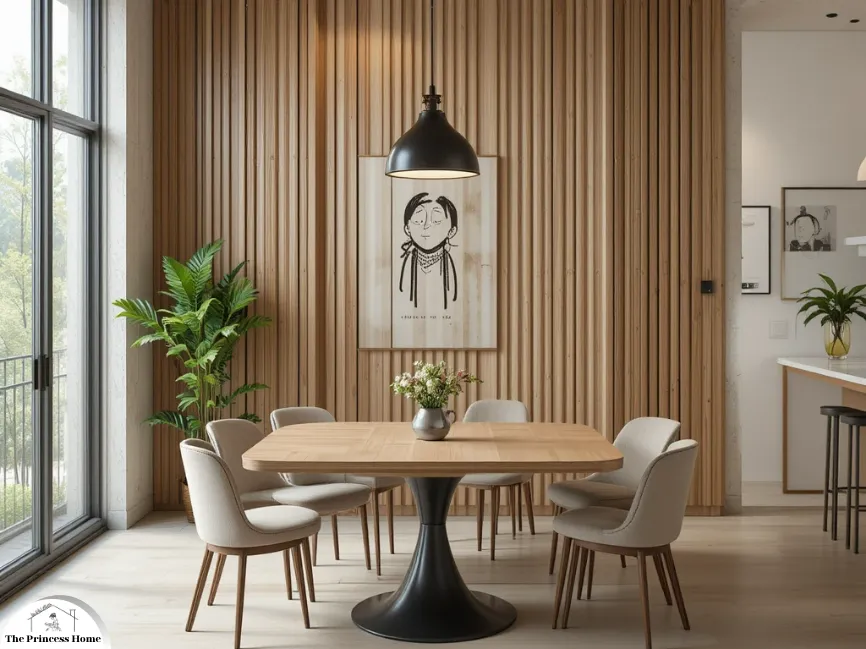
Tips for caring for wooden Wall Dividers
Cleaning & Avoid Moisture:
Dust wooden wall dividers regularly with a soft cloth or duster to remove surface dirt and debris. For stubborn stains, use a mild soap solution and water, taking care not to saturate the wood.Prevent prolonged exposure to moisture, as it can cause wood to warp, swell, or rot over time. Wipe up spills immediately and ensure proper ventilation in the room.
Protective Finish& Sunlight
Apply a protective finish, such as varnish, polyurethane, or wax, to seal the wood and enhance its durability. Reapply the finish as needed to maintain protection. Minimize exposure to direct sunlight, as it can cause fading and discoloration of the wood over time. Use curtains or blinds to block harsh sunlight when necessary. Periodically inspect wooden wall dividers for signs of damage, such as cracks, splits, or loose joints. Address any issues promptly to prevent further deterioration.
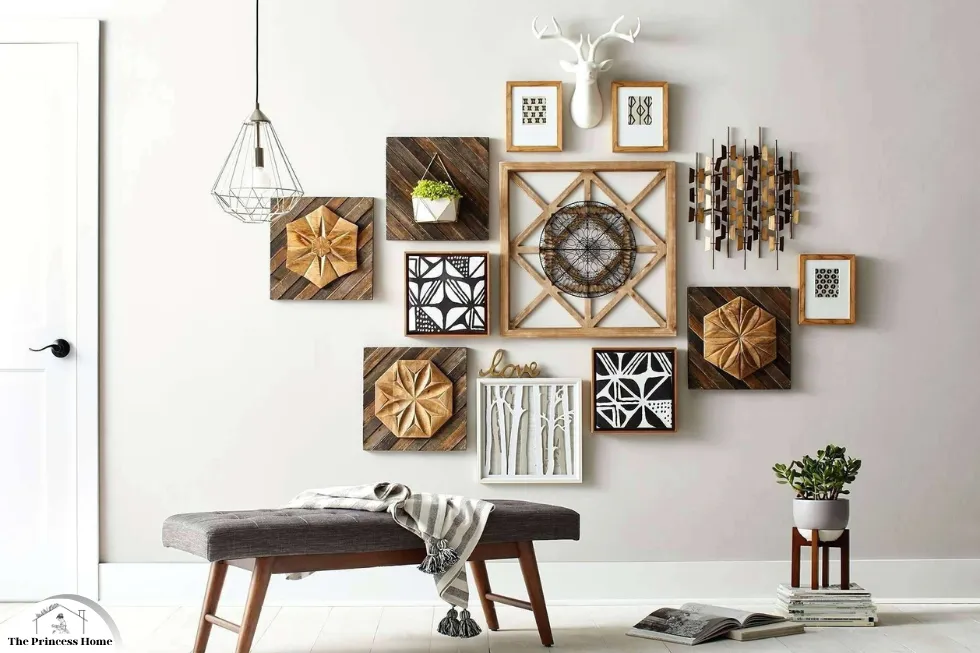
11.Wooden Wall Art
Wood wall art encompasses a wide range of decorative pieces made from wood, such as carved panels, sculptural reliefs, or intricate fretwork designs. Wooden wall art adds texture, depth, and personality to walls, serving as conversation starters and focal points in interior spaces. wall art can be hung individually or arranged in groups to create a gallery wall effect, depending on the desired aesthetic. Wood wall art can be crafted from various types of wood, each with its own characteristics. Common woods used for wooden wall art include pine, oak, cedar, maple, and reclaimed wood. Here are some pros and cons of Wooden wall art :
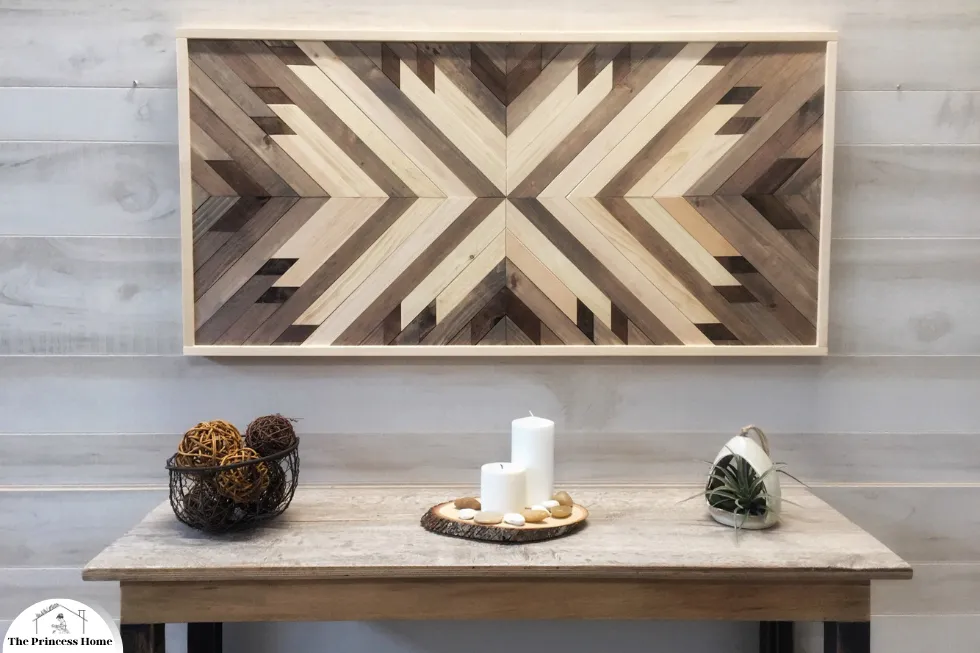
Pros
Wooden wall art offers a warm and organic aesthetic that adds character and warmth to any space. The natural grain patterns, knots, and imperfections of wood enhance the visual appeal of the artwork. Wooden wall art comes in a wide range of styles, shapes, and sizes, allowing for customization to suit different design preferences and decor styles. It can be painted, stained, carved, or embellished with other materials to create unique and personalized pieces.
High-quality wooden wall art can be quite durable and long-lasting, especially if properly maintained. Solid wood pieces, in particular, are resistant to warping, cracking, and other forms of damage. Wooden wall art transcends trends and styles, making it a timeless choice for interior decor. It adds warmth and character to both modern and traditional spaces and can be passed down as heirloom pieces.
Wooden wall art made from sustainably sourced or reclaimed wood is an environmentally friendly choice. Using reclaimed wood helps reduce waste and minimize the demand for new lumber, promoting sustainability.
Cons
Wooden wall art is vulnerable to scratches, dents, and other forms of damage from impact, moisture, and environmental factors. Careful handling and proper installation are necessary to prevent damage and prolong the life of wooden wall art pieces. Wooden wall art requires regular maintenance to preserve its appearance and integrity. This may include dusting, cleaning, refinishing, and repairing any damage that occurs over time.
Depending on the size, complexity, and craftsmanship, wooden wall art can be relatively expensive compared to other types of artwork or decor. Handcrafted or custom pieces may come with a higher price tag due to the time and skill involved in their creation. Solid wood wall art pieces can be heavy, especially larger pieces, which may require additional support and secure mounting hardware for installation.
Direct sunlight can cause wooden wall art to fade or change color over time. Displaying wooden wall art in areas with excessive sunlight exposure may require protective measures, such as UV-protective coatings or window coverings. Caring for wooden wall art involves regular maintenance to protect it from damage and preserve its appearance.
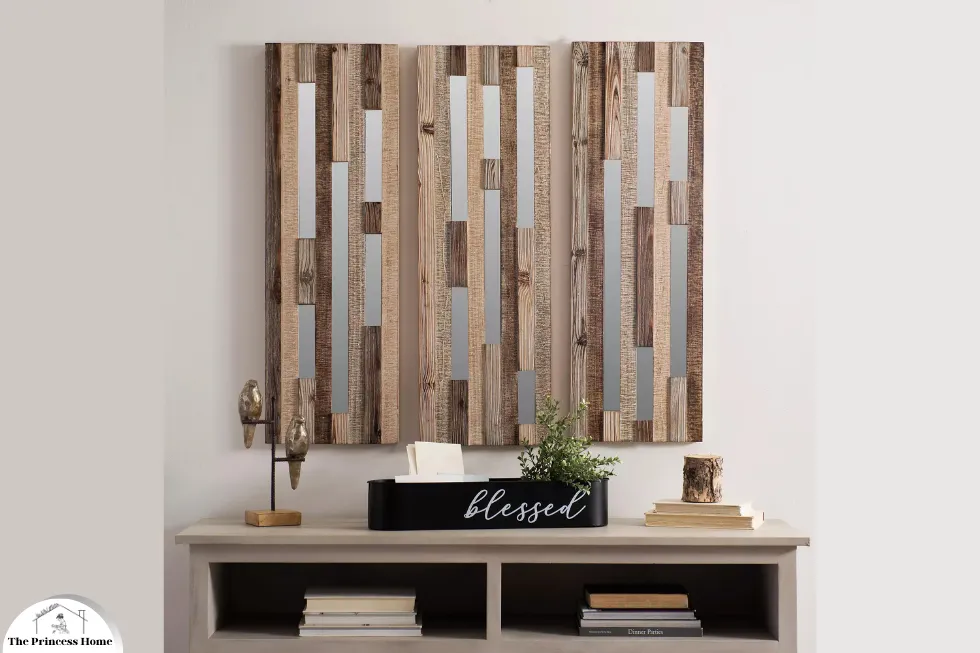
Tips for caring for wooden wall art
Dust & Clean
Dust wooden wall art regularly with a soft, dry cloth or feather duster to remove dirt, dust, and debris. Avoid using abrasive cleaners or harsh chemicals, as they can damage the wood finish. For more thorough cleaning, use a damp cloth or sponge with mild soap and water to gently clean the surface of the wooden wall art. Dry the piece immediately afterward to prevent moisture damage.
Moisture & sunlight
Keep wooden wall art dry and avoid exposing it to excessive moisture or humidity, as this can cause warping, swelling, or mold growth. Wipe up spills immediately and ensure proper ventilation in the room. Minimize sun exposure to wooden wall art by displaying it in areas with indirect sunlight or using UV-protective coatings on windows. Rotate the artwork periodically to prevent uneven fading and discoloration.
Care & repair damage
Handle wooden wall art with care to prevent scratches, dents, or other damage. Avoid hanging or placing heavy objects on top of the artwork, and use caution when moving or transporting it. Address any scratches, dents, or other damage to wooden wall art as soon as possible to prevent further deterioration. Depending on the extent of the damage, repairs may involve sanding, filling, or refinishing the affected area.
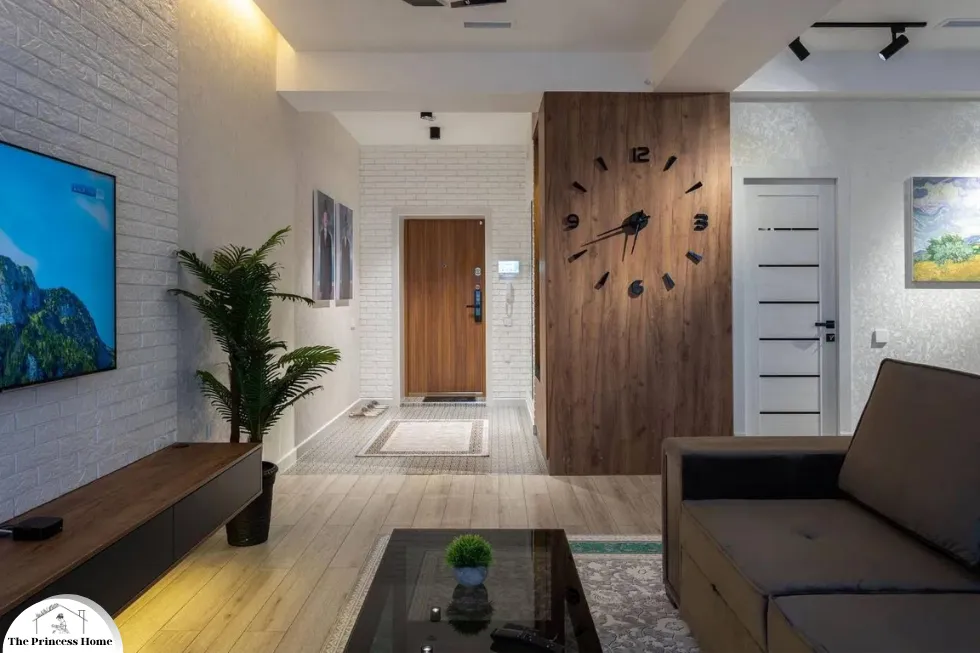
*Expanding of wood wall decor*
1.Wooden Wall Clocks
Combining functionality with decorative appeal, wooden wall clocks add a timeless charm to any room. Available in a variety of styles, from traditional to contemporary, wooden clocks serve as striking focal points while also keeping time with precision.

2.Wooden Wall Sconces
Enhance the ambiance of your space with wooden wall sconces that provide both illumination and decorative flair. Whether showcasing rustic lanterns, modern geometric designs, or vintage-inspired fixtures, wooden sconces add warmth and character to walls while casting a soft, inviting glow.

3.Wooden Wall Planters
Bring the beauty of nature indoors with wooden wall planters that double as living artwork. Whether mounted individually or arranged in a botanical display, wooden planters provide a stylish backdrop for greenery and succulents, adding freshness and vitality to your space.
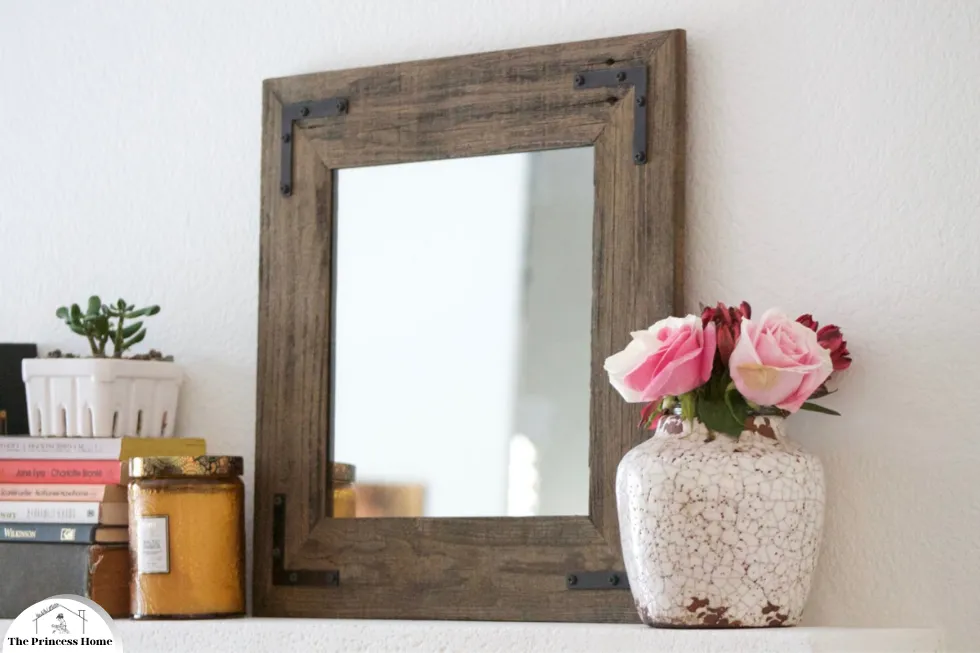
4.Wooden Wall Mirrors
Reflect light and space with wooden wall mirrors that elevate your decor with elegance and sophistication. Whether framed in reclaimed wood, carved with intricate details, or streamlined for modern appeal, wooden mirrors add depth and dimension to any room while enhancing its aesthetic charm.
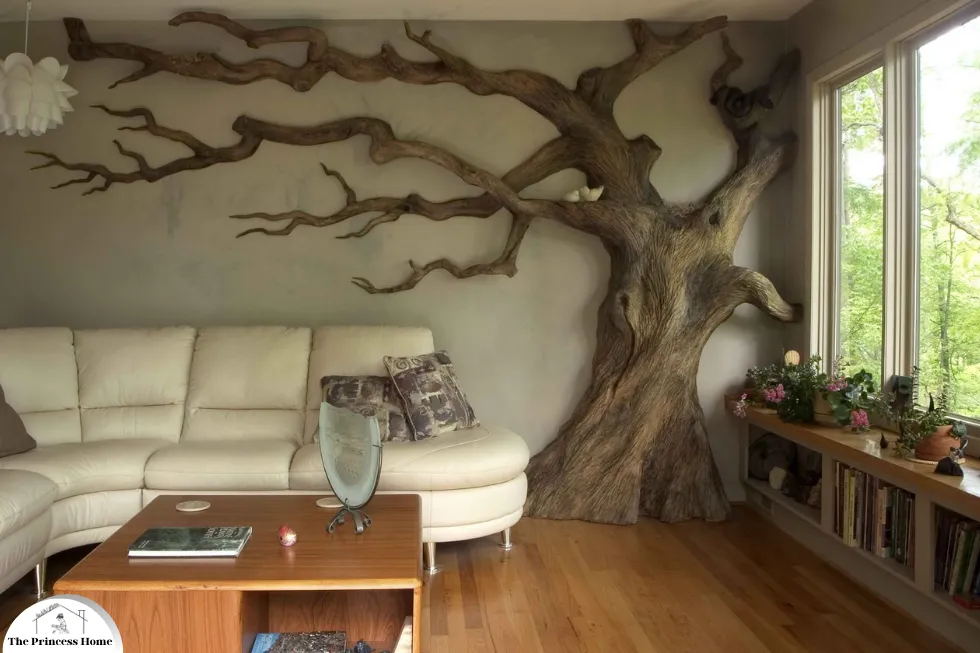
5.Wooden Wall Sculptures
Make a statement with wooden wall sculptures that showcase the beauty and versatility of wood as an artistic medium. Whether abstract compositions, figurative forms, or nature-inspired designs, wooden sculptures create visual intrigue and spark conversation in any space.

6.Wooden Wall Letters
Personalize your space with wooden wall letters that spell out names, initials, or inspirational words. Whether painted, stained, or left natural, wooden letters add a personal touch to nurseries, bedrooms, or living areas, creating a sense of warmth and belonging.
Design Tips for Wood Wall Decor
- Mix materials: Combine wood with other materials like metal or textiles for visual interest.
- Scale matters: Choose wall decor that fits the size of the wall and room appropriately.
- Texture adds depth: Experiment with different wood finishes and textures for dimension.
- Create contrast: Use wood against neutral walls for a striking effect.
- Balance is key: Distribute wooden decor evenly to maintain visual harmony.
- Functional decor: Opt for wooden pieces that serve a purpose, like shelves or hooks.
- Highlight architecture: Accentuate architectural features with wooden decor.
- Personalize: Consider custom-made wooden pieces for a unique touch.
Maintenance Tips for Wood Wall Decor:
- Dust regularly with a soft cloth or duster to prevent buildup.
- Keep wood wall decor away from moisture to prevent warping or mold growth.
- Clean gently with a mild soap solution and avoid harsh chemicals.
- Protect from direct sunlight to prevent fading and damage.
- Maintain the finish by reapplying as needed to protect the wood.
- Address damage promptly to prevent further deterioration.
- Prevent pests by keeping the area clean and treating with repellents if necessary.
- Monitor temperature and humidity levels to ensure a stable environment for the wood.
In conclusion, wood wall decor offers a versatile and timeless solution for enhancing any interior.
Here are some frequently asked questions related to the article :
Q1.What are the benefits of using wood wall decor in my home?
Wood wall decor adds warmth, texture, and character to any space, enhancing its visual appeal and creating a welcoming atmosphere. Additionally, wood is a renewable and sustainable material, making it an eco-friendly choice for interior design.
Q2.How do I choose the right type of wood wall decor for my space?
Consider factors such as your room’s size, style, and existing decor when selecting wood wall decor. Choose materials, finishes, and designs that complement your aesthetic preferences and enhance the ambiance of your space.
Q3.Are there any design considerations I should keep in mind when incorporating wood wall decor?
Balance wood wall decor with other elements in the room, mix different styles for a curated look, and experiment with placement to create visual interest. Coordinate finishes, embrace texture, and personalize your space with accessories to reflect your personality and style.
Q4.How can I maintain wood wall decor to ensure its longevity?
Regularly dust or wipe wood wall decor with a soft, dry cloth to remove dust and debris. Protect against moisture damage by avoiding direct contact with water or liquid spills, and apply protective finishes to seal and preserve the natural beauty of wood. Minimize exposure to sunlight to prevent fading and discoloration, and schedule professional maintenance as needed to address wear and damage.
Q5.Can I install wood wall decor myself, or should I hire a professional?
The complexity of installation depends on the type of wood wall decor you choose. While some options, such as wood wall tiles or shelves, may be suitable for DIY installation, others, like custom millwork or wall murals, may require professional expertise. Consider your skill level, tools, and safety precautions before undertaking any installation project.
Q6.How can I incorporate wood wall decor into different rooms of my home?
Wood wall decor can be used in virtually any room, from living rooms and bedrooms to kitchens and bathrooms. Consider the specific function and design goals of each space when selecting wood wall decor, and tailor your choices to suit its unique requirements and aesthetic preferences.
Q7.Is wood wall decor suitable for modern or minimalist interiors?
Absolutely! Wood wall decor comes in a variety of styles, finishes, and designs, making it versatile enough to complement any design aesthetic. From sleek and streamlined to rustic and organic, there are countless options to suit modern, minimalist, or any other style preference.
Q8.Where can I find inspiration for incorporating wood wall decor into my home?
Look to interior design magazines, websites, social media platforms, and home improvement stores for inspiration and ideas. Create mood boards, gather swatches, and visit showrooms to explore different options and visualize how wood wall decor can transform your space. Additionally, consult with interior designers or architects for expert advice and guidance tailored to your specific needs and preferences.



